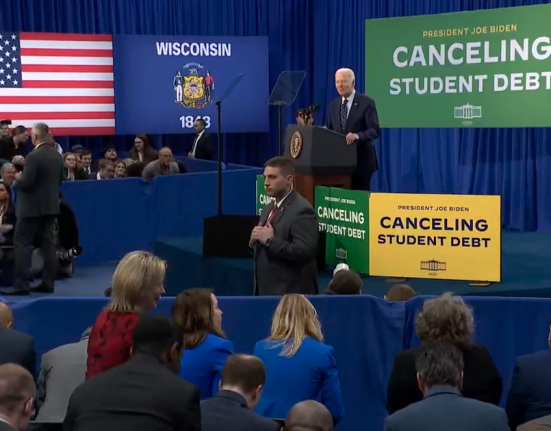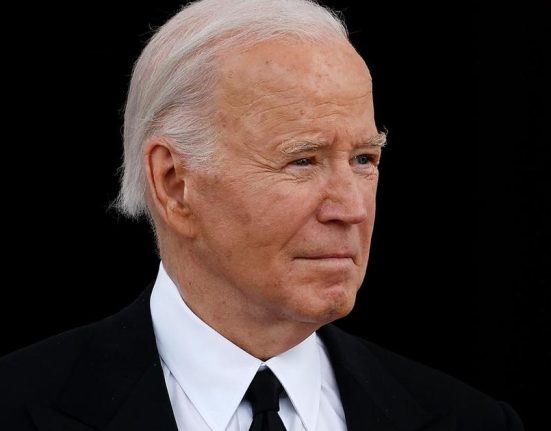The last batch of COVID-19 relief funding for public schools allocated by the American Rescue Plan Act of 2021 is set to expire at the end of September 2024 — and states and school districts still have billions in unspent funds.
According to data from the Department of Education, not a single state has managed to spend all of its allocated funding for the Elementary and Secondary School Emergency Relief Fund, which was first created by the CARES Act of 2020 and bolstered by two subsequent allocations, including the American Rescue Plan Act enacted in the first months of President Joe Biden’s administration.
VACCINATION RATES LOW DESPITE ‘TRIPLEDEMIC’ WARNINGS
The total allocation for schools from the three laws is roughly $189.5 billion, including $121.97 billion that came from the American Rescue Plan alone. But as the calendar turns to 2024, states and school districts have an increasingly condensed time frame in which to spend their remaining funds, which are set to expire on Sept. 30.
According to the Department of Education’s COVID-19 relief funding tracker, Iowa is the only state that has even spent more than 80% of its allocated funds. The state was given $1.19 billion and has spent $977 million to date. But Iowa still has more than $200 million in funds to spend over the next nine months.
The state with the least amount of ESSER money is not even a state. Washington, D.C., was allocated $600 million in ESSER funds across the three relief packages, including $386 million from the American Rescue Plan. To date, the public schools in the nation’s capital have spent 40%, or $240 million, of their allotted funds.
As for the nation’s most populous states, California has spent 65% of the $23 billion it was allocated, and New York has spent 50% of the $14 billion it received. Texas received $19 billion and has spent 71% of it, while Florida has spent 68% of the $10.9 billion it was allotted.
But that leaves billions of dollars of relief funding unspent heading into the final months of the pandemic-era programs. In theory, schools will lose access to money they didn’t use by October without intervention from Congress.
With time running out to spend the funds, whether school districts will even be able to spend the money, as well as how they spent the earlier tranches of funding and what the looming deadline could mean for the future, remain key questions.
In an interview with the Washington Examiner, Jim Blew, former Department of Education official and co-founder of the Defense of Freedom Institute, said that school districts are “going to scramble to spend all that money” before the deadline, but added that he is confident they will be successful.
“I have faith in the system’s ability to spend money,” he said. “That sounds like a lot of money, but I have never seen bureaucrats not figure out a way to spend the money when they have it.”
The main thing Blew said that should raise alarms for schools is a looming “fiscal cliff” school districts will face when the funding expires. Many school districts, he explained, have used COVID relief funds to hire and pay new staff — meaning that some districts may have to cut jobs once the funds expire. This, he said, will lead to intense lobbying efforts to extend the deadline.
“Come September, the establishment, the teacher unions, they’ll all be going to Congress to say, ‘You can’t cut off these funds that were meant for emergency purposes because we face a fiscal cliff,'” Blew said. “We’re looking at an enormous lobbying effort to continue federal funding at this level and maybe higher.”
Blew said a likely scenario next year involves Congress extending the deadline on ESSER funds, especially given that 2024 is a campaign year.
“People in campaign mode don’t want anyone unhappy with them,” he said. “When they start hearing that people are going to be losing their jobs because there’s no more money from the COVID emergency, there’s going to be every temptation to put more federal money into the system.”
CLICK HERE TO READ MORE FROM THE WASHINGTON EXAMINER
The answer, Blew said, is not to keep funding the system, but to change the way education is funded by adopting school choice.
“We now have ample proof that just giving the system money does not lead to better outcomes,” he said, referencing the learning loss that took place after 2020 despite the massive increase in funding for schools. “You got to give families the option to use money outside of the system. That creates incentives for the system to get better.”







